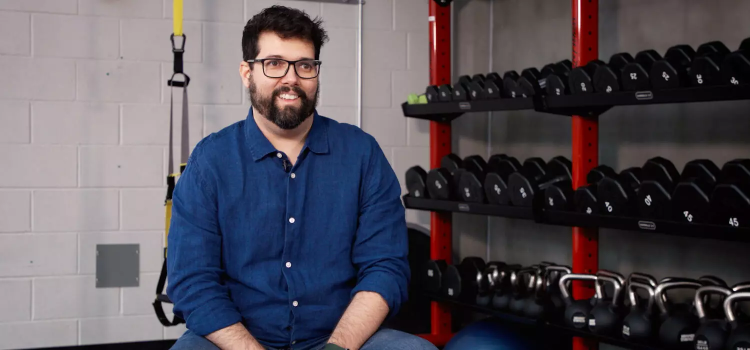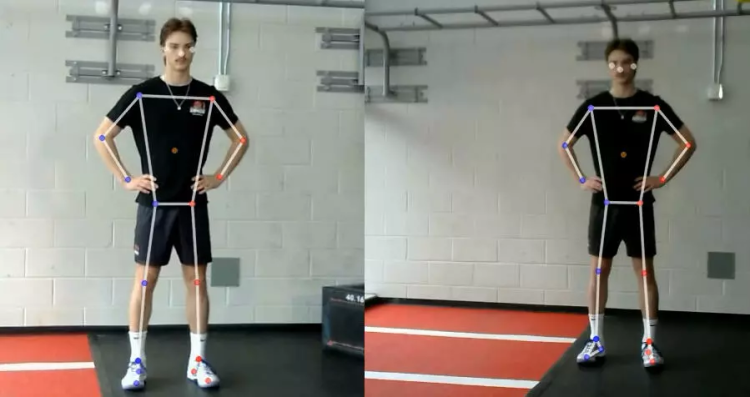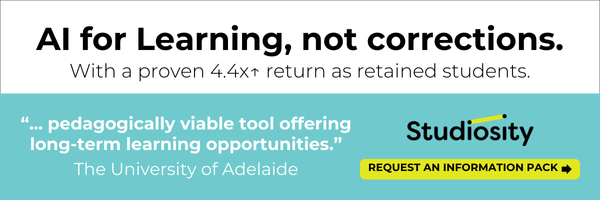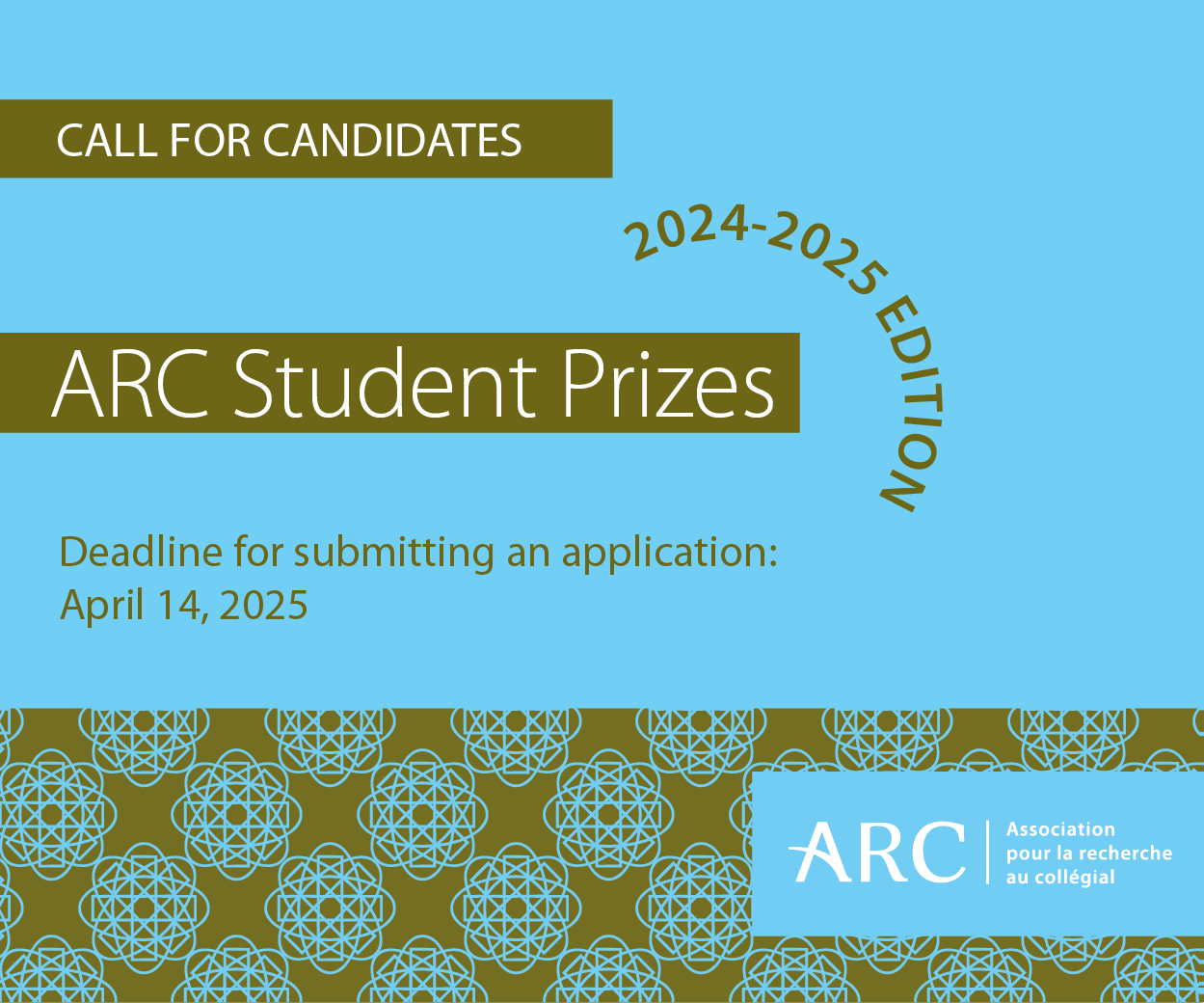Dr. Victor Cossich, PhD, had achieved what many academics dream of, and at a remarkably young age.
By his early thirties, Cossich had already played a key role in structuring and managing two major biomechanics laboratories: one for the Brazilian Olympic Committee and another for the largest orthopedic hospital in Latin America, the National Institute of Traumatology and Orthopedics (INTO), both in Rio de Janeiro, Brazil.

One lab focused on aiding general patients in recovering from mobility issues, while the other was dedicated to helping elite athletes maximize their performance for the 2016 Summer Olympic Games in Rio.
Yet, Cossich wasn't satisfied. He wanted to expand his capacity for problem solving and patient care. After searching for a place where he could expand his innovation and entrepreneurship skills and experience, the University of Calgary came out on top. So, he uprooted his thriving career and young family and moved to Calgary.
Video Credit: Haley Martin, Communications
A problem worth solving
The task of establishing kinesiology facilities at the INTO kept Cossich busy with securing federal funding, assembling and leading a team of researchers and overseeing the acquisition of specialized equipment and systems. While he was able to acquire most of the tools he needed, appropriate motion capture solutions proved challenging. These systems, critical for analyzing human movement in both clinical and athletic settings, were prohibitively expensive and labor-intensive to purchase, learn and operate.
"At the time, the available systems required hours to set up, specialized training, and were far too expensive to acquire, especially given the exchange rate," says Cossich. "It was a critical tool we needed, but we just couldn't find an ideal system."
Cossich, an avid problem-solver, felt compelled to create his own system. After securing a grant from the Brazilian government, he teamed up with his co-founder, Dr. Conrado Laett, to develop Mokapp: a software platform that leverages artificial intelligence to transform ordinary cameras, such as webcams, into powerful motion capture and processing tools. The software was designed to be affordable, streamline onboarding and operation, deliver reliable diagnoses, suggest impactful interventions, and generate valuable data.

Mokapp's motion tracking uses two basic cameras, like cheap webcams, to capture motion and uses sophisticated AI software to track and analyze it. Photo Credit: Haley Martin, Communications
Choosing UCalgary
While Mokapp's early success in Brazil was promising, Cossich realized that creating transformative technology required more than technical skill; it required a deep understanding of innovation ecosystems. He looked for a place where he could boost his innovation capacity. UCalgary stood out as exactly that place.
He and his family made the difficult decision to uproot their life and move to Calgary. "Leaving behind my career, my colleagues, and my community was not easy," he admits. "But I was looking for a place where I could truly enhance my capacity for innovation. I saw the University of Calgary as that place, a hub for entrepreneurial thinking and a community where I could grow Mokapp into something bigger." So, he left his positions in Rio and accepted a postdoc position in the Faculty of Kinesiology at UCalgary.
Finding support and building momentum
Upon arriving, Cossich quickly immersed himself in UCalgary's innovation ecosystem. His principal investigator, Dr. Larry Katz, PhD, professor emeritus in kinesiology recognized Mokapp's potential and supported him in developing the project alongside his postdoctoral research.
Cossich's journey through UCalgary's programs began with the e2i program - previously run by Innovate Calgary and now the Hunter Hub for Entrepreneurial Thinking - where he gained foundational entrepreneurial skills and insights, setting the stage for Mokapp's growth.
He then joined Aeir, a mentorship program powered by the Hunter Hub, which provided him with personalized guidance and strategic insights. Dr. Paula Berton, PhD, one of his Aier mentors, recalls, "Victor came in with a strong scientific foundation and a great product prototype but was eager to learn how to break into markets, acquire customers and find investment. We were able to help him think through his priorities, focus his efforts and begin targeting customers."

A screenshot of Mokapp software tracking Pierce Decore from the Dinos men's volleyball team. Photo Credit: Victor Cossich
Building on this momentum, in the summer of 2024, he participated in the Lab2Market Launch, a federal program offered at UCalgary through the Hunter Hub, which provided tools to evaluate Mokapp's market readiness and strategies for scalability.
Finally, Cossich took part in the LaunchPad program, also run by the Hunter Hub, where he further honed his skills and expanded his entrepreneurial network.
These experiences provided Cossich with the mentorship, training, funding and business acumen necessary to navigate the entrepreneurial landscape and turn the Mokapp prototype into a viable business.
Making an impact at home
Cossich and his family have recently returned to Brazil, armed with the knowledge and networks he gained during his three years in Calgary. Mokapp is already having an impact, with a volleyball team in Rio using the platform for its performance analysis.
"Now we have data that help us better understand athletes' movement patterns, enabling training adjustments and enhancing performance, thanks to Mokapp," says Marco Jardim, strength and conditioning coach of the SESC RJ Flamengo women's volleyball team. "It's a game-changer for teams that don't have the budget for traditional systems."
The system's ease of use and affordability have also caught the attention of professional Brazilian soccer teams and sports associations, with discussions for wider adoption underway.
Mokapp's potential extends beyond sports. With its ability to provide quick, data-driven insights, the platform could revolutionize physical therapy, elder care, and other clinical applications. Recent grants from the Brazilian government have now enabled Cossich to hire a dedicated IT specialist, which will help accelerate product refinement.
Making a difference through entrepreneurship
Victor Cossich started his journey as a researcher focused purely on science and patient care. But through his experiences in innovation and entrepreneurship, he's come to see that research, practice and innovation go hand in hand. By founding Mokapp, he's not only enhanced his ability to help patients, but he's empowering other practitioners to do the same by providing them with a more accessible and affordable motion-tracking system.
If he wasn't convinced before, he is now: entrepreneurship is a compelling and natural path for researchers and practitioners to elevate their capacity for impact. "Researchers love to step into the unknown, learn new things, and solve problems. These are all things essential for innovation," says Cossich. "You have a world-class entrepreneurial environment at your fingertips at the University of Calgary. The supports are incredible."
His advice for those contemplating entrepreneurship?
"Just try it, make mistakes, find good mentors, improve yourself, try it again and just keep doing it."













